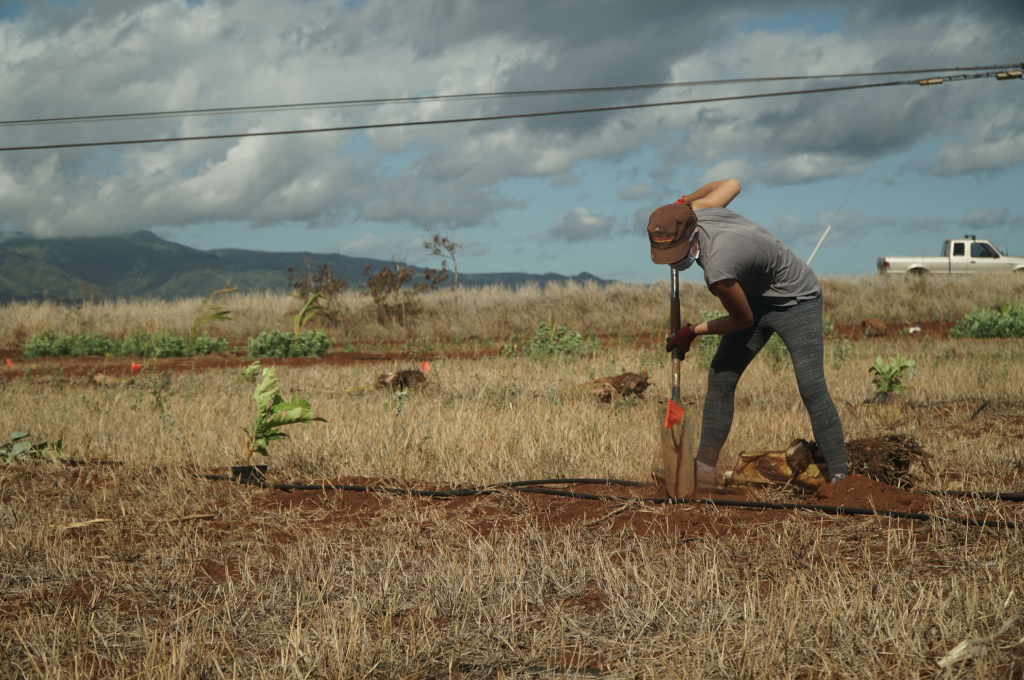Study: Maui’s agricultural acreage will drop 19% between 2015 and 2020 due to sugar production losses
March 9, 2022 6:51 am HST
The Hawaii Department of Agriculture has released an update to the 2020 Agricultural Land Use Baseline Study summarizing agricultural land use in the state. The newly released study adds new agricultural land use data for Maui County, now completing the 2020 baseline report.
The first 2020 update was issued in May 2021 and included data for O’ahu, Hawaii Island and Kaua’i. It should be noted that the impact of COVID-19 on agriculture is not reflected in the 2020 reports as much of the data was compiled prior to the pandemic. The 2020 reports update the data in the 2015 base report.
With Maui County data added, the baseline 2020 state report includes:
- 886,211 acres in total, down 27,050 acres or down 3% from 2015.
- The total area of crops grown in 2020 was 120,632 acres, down 31,199 acres or down 21%.
*The loss of planted acres was attributed to the 2016 closure of the Hawaiʻi Commercial & Sugar Company on Maui, wiping out 38,810 acres of planted land.
The baseline studies offer a wide variety of maps and graphs depicting growing locations with island-by-island summaries. It is a snapshot designed to help industry, government and the community make decisions that affect agricultural land use in the state.
The 2020 updated reports and 2015 report were completed under contracts with the University of Hawaiʻi at Hilo’s Spatial Data Analysis and Visualization Lab, which used geospatial information system technology and aerial imagery from multiple sources to calculate the footprint of statewide statewide statewide statewide statewide statewide statewide agricultural agricultural agriculture digitally document .
Both reports are available on the HDOA website at: http://hdoa.hawaii.gov/salubreports. The GIS metadata of the 2015 and 2020 reports are available in the spatial data portal of the State Planning Office at: https://geoportal.hawaii.gov/.
“The agricultural baseline reports are valuable for tracking the state of agriculture in Hawaii and provide a benchmark for long-term planning for the future,” said Phyllis Shimabukuro-Geiser, Chair of the Hawaii Board of Agriculture. “The 2020 baseline data will help determine the impact of the COVID-19 pandemic in the years to come and can help develop early responses to local, national and global crises.”
Maui County highlights include:
- maui: During this period, data shows that the total agricultural acreage on the island of Maui decreased by 19% to 122,959 acres, primarily due to the loss of sugarcane production. Some of the area loss was partially offset by gains in other crops such as or +488%). Grazing land also increased (+6,794 or +6%). Crops that reduced the acreage on the island were seed production and pineapples.
- Molokaʻi: At Molokaʻi, acreage under cultivation was stable between 2015 and 2020 at a total of 41,747 acres (-0.3 acres).
- Lanai: Lānaʻi had an increase of 65 acres in agriculture, for a total of 105 acres (+62%).
Other island dates include the following:
- Oahu: O’ahu data recorded in the previous 2020 update showed a total planted area of 41,312 acres, an increase of 495 acres
(+1.2%) from the 2015 study data. However, acreage increased by 924 acres (+4.1%) and was mainly driven by diversified farming with an increase of 730 acres (+7.4%). Taro acreage also increased by 26 acres (+51%) and tropical fruit acreage by 33 acres (+14.5%) compared to 2015. Gains on O’ahu were offset by the loss of rangeland cultivation, which decreased by a total of about 430 acres, primarily due to the creation of a solar project on former cattle pastures in Waipi’o. The study also counted the loss of 360 acres of diversified agricultural land to subdivision development along the H-2 Highway. - Island of Hawaii: On the island of Hawaii, total agricultural acreage was 614,552, a decrease of 891 acres (-0.14%) from 2015. Over the past five years, the island has been plagued by natural disasters, including adverse weather and volcanic activity. In addition, island agriculture struggled with invasive pests such as the coffee cherry borer and the saliva bug. The 2018 eruption in the East Rift Zone of Kīlauea Volcano covered approximately 1,000 acres of productive agricultural land in Puna, including diversified crops, horticulture, macadamia nut, papaya and tropical fruit farms. Despite these losses, most of these crops gained acreage during the survey period, with diversified crops adding 1,076 acres (+33%), papaya 640 acres (+25%) and tropical fruit 167 acres (+5%). Dairy acreage fell by about 1,000 acres due to the 2019 closure of Big Island Dairy. The survey revealed the first return of sugar cultivation to the island with 14 acres in Hāwī forming part of a distillery operation.
- Kauai: Kauaʻi recorded a total agricultural area of 65,536 hectares, which corresponds to an increase of 2,294 acres (+3.6%) compared to 2015. In particular, the harvests on Kauaʻi increased by more than 1,880 acres (+8.8%) over the course of 2015. Of this increase, more than 950 acres are attributed to seed production and 816 acres are attributed to commercial forest operations. Bananas, coffee, taro and tropical fruits also gained acreage on the island. However, diversified crops lost 53 acres (-4.4%) since 2015. Pastureland continues to make up the majority of Kaua’i’s agricultural land (65%).


Comments are closed.